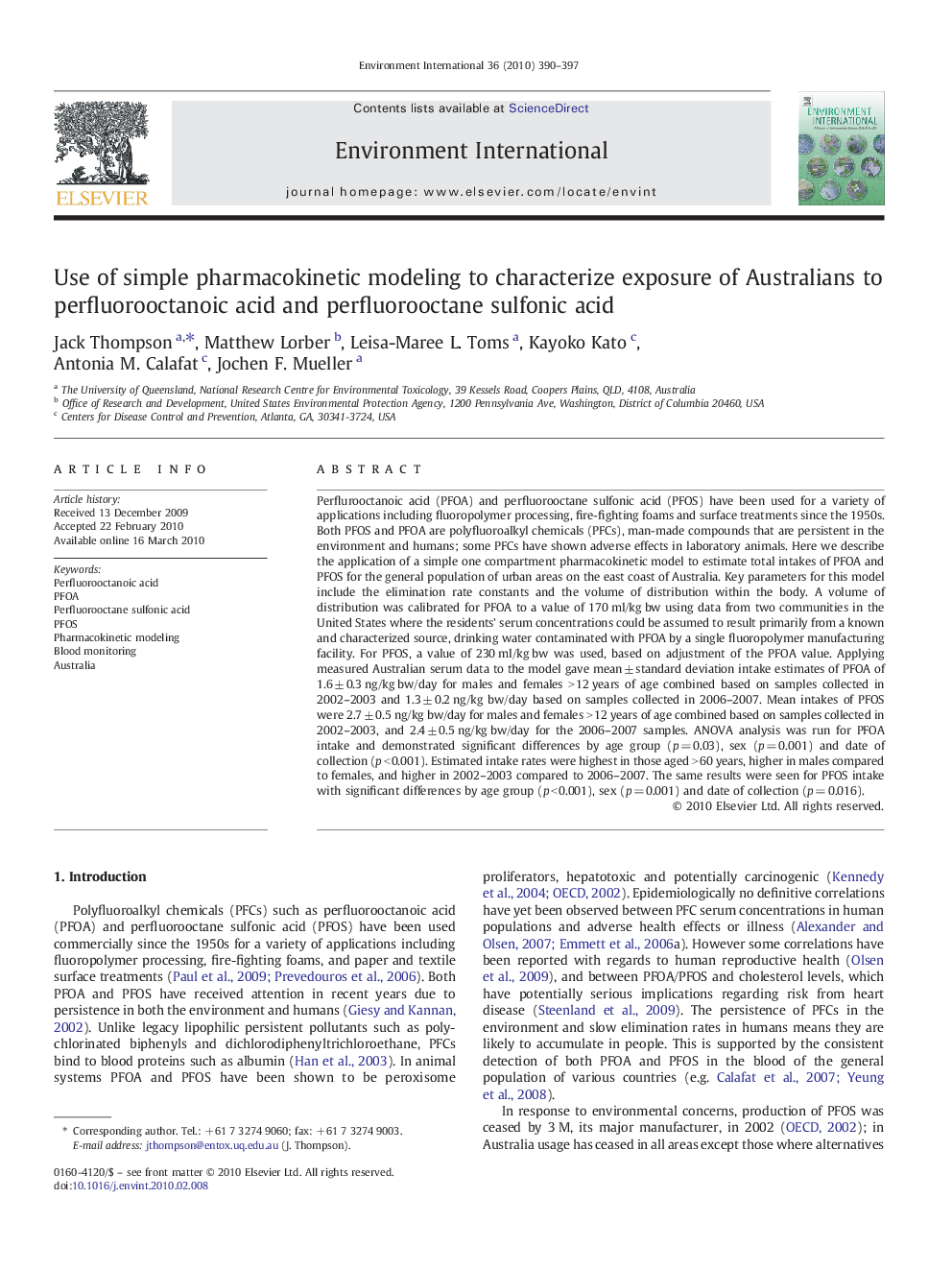| کد مقاله | کد نشریه | سال انتشار | مقاله انگلیسی | نسخه تمام متن |
|---|---|---|---|---|
| 4423480 | 1308827 | 2010 | 8 صفحه PDF | دانلود رایگان |

Perflurooctanoic acid (PFOA) and perfluorooctane sulfonic acid (PFOS) have been used for a variety of applications including fluoropolymer processing, fire-fighting foams and surface treatments since the 1950s. Both PFOS and PFOA are polyfluoroalkyl chemicals (PFCs), man-made compounds that are persistent in the environment and humans; some PFCs have shown adverse effects in laboratory animals. Here we describe the application of a simple one compartment pharmacokinetic model to estimate total intakes of PFOA and PFOS for the general population of urban areas on the east coast of Australia. Key parameters for this model include the elimination rate constants and the volume of distribution within the body. A volume of distribution was calibrated for PFOA to a value of 170 ml/kg bw using data from two communities in the United States where the residents' serum concentrations could be assumed to result primarily from a known and characterized source, drinking water contaminated with PFOA by a single fluoropolymer manufacturing facility. For PFOS, a value of 230 ml/kg bw was used, based on adjustment of the PFOA value. Applying measured Australian serum data to the model gave mean ± standard deviation intake estimates of PFOA of 1.6 ± 0.3 ng/kg bw/day for males and females > 12 years of age combined based on samples collected in 2002–2003 and 1.3 ± 0.2 ng/kg bw/day based on samples collected in 2006–2007. Mean intakes of PFOS were 2.7 ± 0.5 ng/kg bw/day for males and females > 12 years of age combined based on samples collected in 2002–2003, and 2.4 ± 0.5 ng/kg bw/day for the 2006–2007 samples. ANOVA analysis was run for PFOA intake and demonstrated significant differences by age group (p = 0.03), sex (p = 0.001) and date of collection (p < 0.001). Estimated intake rates were highest in those aged > 60 years, higher in males compared to females, and higher in 2002–2003 compared to 2006–2007. The same results were seen for PFOS intake with significant differences by age group (p < 0.001), sex (p = 0.001) and date of collection (p = 0.016).
Journal: Environment International - Volume 36, Issue 4, May 2010, Pages 390–397